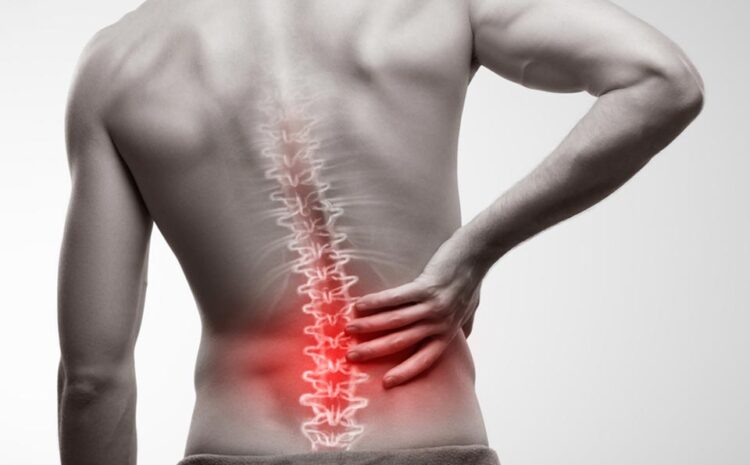Back pain management can be greatly improved by understanding when to use heat or ice. These two therapies are among the most popular for back pain relief, but each one serves different purposes. Knowing when to apply heat versus ice can make a big difference in the effectiveness of your pain relief. In this article, we’ll cover how each works, when to use them, and tips for safe application.
How Heat and Ice Work
Ice Therapy: Also called cryotherapy, ice therapy helps to numb the painful area and reduce inflammation and swelling. It’s typically best for acute injuries, especially if there is noticeable swelling or pain.
Heat Therapy: Heat therapy works by increasing blood flow and relaxing muscles, which helps relieve chronic pain, stiffness, and muscle tension. This is generally more effective for ongoing pain rather than fresh injuries.
When to Use Ice
Ice is most effective when dealing with new injuries or any situation where inflammation or swelling is present. Here are some common scenarios where ice is beneficial:
| Situation | When to Use Ice | Benefits |
|---|---|---|
| Acute Back Injury | Within the first 48 hours after injury | Reduces swelling, inflammation, and numbs pain |
| Swelling or Inflammation | If there is visible swelling or warmth | Reduces inflammation and controls pain |
| After Physical Activity | After strenuous activity or exercise | Eases soreness and prevents swelling |
| Sharp Pain | When pain is intense and localized | Numbs pain and reduces swelling quickly |
Tip: Apply ice for 15-20 minutes at a time, using a cloth or towel between the ice and skin to prevent frostbite.
When to Use Heat
Heat works best for chronic back pain, muscle tension, and stiffness. Here are situations where heat is helpful:
| Situation | When to Use Heat | Benefits |
|---|---|---|
| Chronic Back Pain | For long-lasting pain or discomfort | Increases blood flow, relaxes muscles, and reduces stiffness |
| Muscle Tension or Spasms | When muscles feel tight or in spasm | Relieves tension and helps muscles relax |
| Post-Injury (After 48 hours) | Once initial swelling subsides | Increases flexibility and promotes healing |
| Stiffness from Inactivity | After waking up or sitting for long periods | Eases stiffness and improves circulation |
Tip: Apply heat for 15-20 minutes with a heating pad, warm towel, or warm bath. Avoid sleeping with heat applied to your back.
How to Apply Heat and Ice Safely
Both heat and ice treatments need to be applied carefully to avoid skin damage. Here are guidelines for safe use:
Ice Application Tips:
- Use a Cold Pack: Commercial ice packs are ideal; if unavailable, crushed ice in a plastic bag works.
- Use a Barrier: Always place a cloth or towel between the ice and skin to prevent frostbite.
- Timing: Use for 15-20 minutes at a time. Avoid prolonged use without breaks.
- Monitor Skin: If skin becomes numb or bright red, remove the ice immediately.
Heat Application Tips:
- Use a Heating Pad or Warm Water Bottle: Ensure it’s wrapped in a cloth to avoid burns.
- Take a Warm Bath: A warm bath can help relax muscles, especially after a long day.
- Avoid Direct Contact: Never apply heat directly to the skin without a cloth barrier.
- Timing: Use heat for 15-20 minutes. Never fall asleep while using heat.
Alternating Heat and Ice
Sometimes, alternating between heat and ice can be highly effective. For example, starting with ice to reduce inflammation, followed by heat to relax muscles, can give the best results.
| Technique | How to Alternate | Benefits |
|---|---|---|
| Ice First, Then Heat | Start with 15 minutes of ice, then apply heat for 15 minutes | Reduces swelling, relaxes muscles, and improves circulation |
| Heat First, Then Ice | Use heat for muscle relaxation, followed by ice to reduce any inflammation | Relaxes muscles, then numbs pain and reduces swelling |
Tip: Alternate treatments for 20–30 minutes, ensuring skin cools down between applications.
When Not to Use Heat or Ice
Heat and ice can be helpful for many, but they’re not always suitable. Avoid using heat or ice in these situations:
| Condition | Why to Avoid Heat/Ice | Alternative Action |
|---|---|---|
| Open Wounds | Ice or heat can aggravate open wounds | Clean and dress wound, see a doctor |
| Numbness or Poor Circulation | Ice can worsen numbness; heat can increase swelling | Consult a doctor for proper care |
| Infection | Heat can worsen inflammation or spread infection | Seek medical advice for treatment |
Conclusion
Understanding when to use heat or ice is essential for effective back pain management. Ice works well for acute pain, swelling, and inflammation, especially in the first 48 hours of an injury. Heat is best for chronic back pain, muscle tension, and stiffness. By using these therapies safely, you can enjoy more effective back pain relief.
Adding these techniques to your back pain management routine can help alleviate discomfort and support healing. If you’re unsure which to use or if your pain continues, consult a healthcare professional for guidance.
I hope this article is clear and practical for orthopedic patients looking to manage back pain effectively with heat and ice. Let me know if there’s any specific information you’d like to add or adjust!


